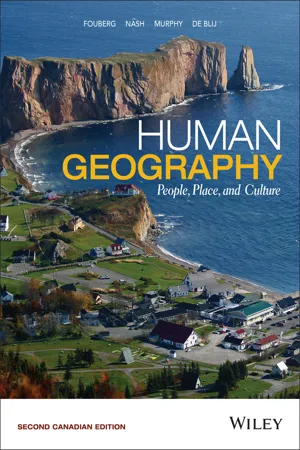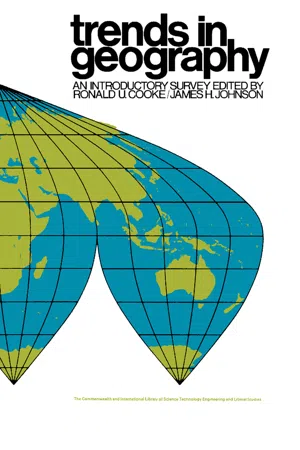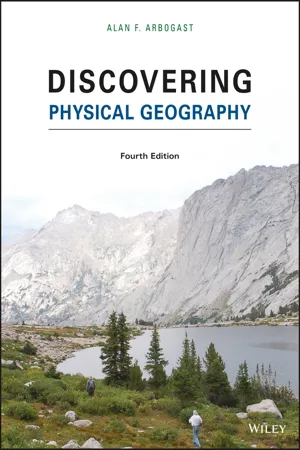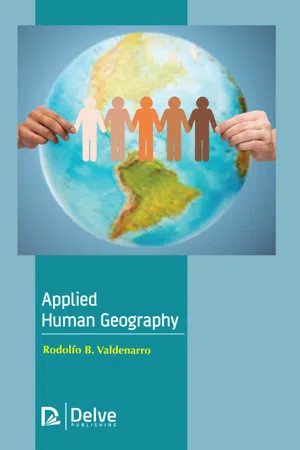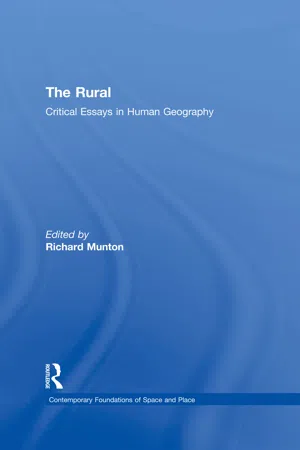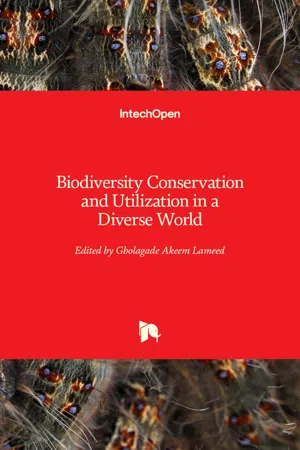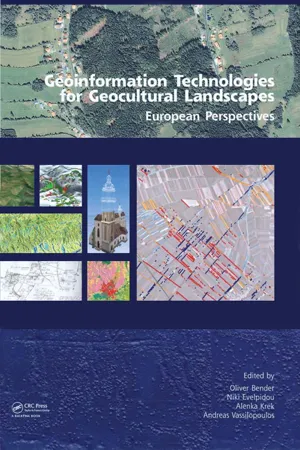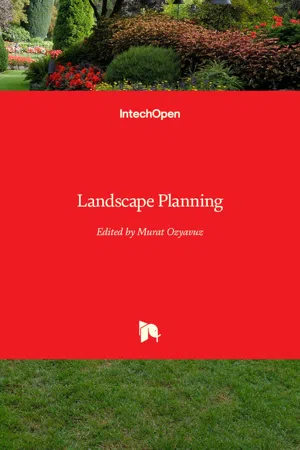Geography
Agricultural Geography
Agricultural geography is the study of the spatial patterns and processes related to agriculture. It examines the distribution of crops, farming systems, and land use, as well as the interactions between agriculture and the environment. This field also explores the social, economic, and political factors that influence agricultural practices and their impact on rural and urban landscapes.
Written by Perlego with AI-assistance
Related key terms
1 of 5
11 Key excerpts on "Agricultural Geography"
- eBook - PDF
Human Geography
People, Place, and Culture
- Erin H. Fouberg, Alexander B. Nash, Alexander B. Murphy, Harm J. de Blij(Authors)
- 2015(Publication Date)
- Wiley(Publisher)
What is the contemporary global pattern of agriculture and agribusiness? 4. How has agriculture influenced settlement patterns and the cultural landscape? 9.1 What Is Agriculture, and Where Did It Begin? Where does our food come from? When we walk up and down the aisles in the grocery store, we see that some produce is grown in Canada, and some comes from faraway places. We hear about the “100 Mile Diet”—the challenge to eat only produce grown within 100 miles of where we live—while at the same time we can buy tender fruit from Chile or apples from New Zealand. Agriculture, then, can sometimes be very local and sometimes global in terms of both production and consumption. Bound up in these considerations is our spatial perspective—location, region, landscape, place, and movement—because where our food is grown, and how it moves from where it is produced to where it is consumed, are central to geographers’ questions about agriculture. Agriculture has long been a key topic of study for human geographers across Canada and around the world. It is one area of human activity that clearly illustrates the important but tenuous symbiotic relationship existing between humans and the natural environment. In fact, agriculture makes up one of the most significant human uses of land in the world, with pasture lands and croplands alone taking up more than one-third of the Earth’s land area at the turn of the 21st cen- tury. Also, more than two-thirds of global water consumption by humans is for agricultural purposes. Thus, geographical variations in the availability and quality of agricultural lands, along with the availability of water, are among the central matters of concern to agricultural geographers and other human geographers. Unfortunately, many of the agriculture-related issues ex- amined by geographers today are related to the negative envi- ronmental and social consequences of contemporary farming practices. - eBook - ePub
Geographies of Agriculture
Globalisation, Restructuring and Sustainability
- Guy Robinson(Author)
- 2014(Publication Date)
- Routledge(Publisher)
2 The changing focus of Agricultural Geography2.1 ‘Traditional’ Agricultural GeographyThis chapter focuses on how the content of Agricultural Geography has evolved post-1945, thereby providing a context for the more extended consideration of key components of agricultural change in the rest of the book. Emphasis is placed upon how there has been a move from a ‘traditional’ form of Agricultural Geography to new approaches embracing different ideas from across the social sciences.A standard definition of Agricultural Geography in the mid-1980s referred to ‘the description and explanation of spatial variations in agricultural activity over the earth’s surface’ (Ilbery, 1985a, p. 1). This interpretation was based largely on consideration of two major avenues of enquiry that had dominated Agricultural Geography in the twentieth century:• Location and context, in which emphasis was placed on the regional characteristics of agricultural activities, especially broad trends and tendencies (Coppock, 1968; 1971).• Explanations of agriculture’s great diversity, through consideration of relationships between the large number of relevant variables associated with social, economic, physical and historical factors affecting agriculture (e.g. Grigg, 1992a).The regional focus in the first of these can be traced to the first time that a specialism specifically termed ‘Agricultural Geography’ played a leading role in the development of geography as an academic discipline. This was in the 1920s when Agricultural Geography was one of the principal specialisms that emerged as part of the growth of regional geography as the discipline’s central paradigm (Johnston, 1997, pp. 44–52). An example of this was Baker’s (1926) work on the recognition of ‘agricultural regions’ in different parts of the world. The region became the central focus of study for agricultural geographers, with both singleattribute and multi-attribute regions being recognised. Indeed, for the first half of the twentieth century Agricultural Geography involved regional delimitations following large-scale mapping of distributions of crops and livestock (e.g. Robertson, 1930) and the classification of agricultural systems (e.g. Whittlesey, 1936). Prevailing ideas on environmental determinisim emphasised the physical controls exerted upon the nature of agricultural activity. Description of agricultural variations was important, with land-use mapping of significance in some countries, a good example being the Land Utilisation Survey of Great Britain, begun in the 1930s by the geographer L. D. Stamp (1948). - eBook - PDF
Trends in Geography
An Introductory Survey
- Ronald U. Cooke, James H. Johnson, Ronald U. Cooke, James H. Johnson(Authors)
- 2013(Publication Date)
- Pergamon(Publisher)
3-15. SAUER, C. O. (1956) The agency of man on earth, in THOMAS, W. L., JR. (Ed.) Man's Role in Changing the Face of the Earth, U. of Chicago P., Chicago, pp. 49-69. SIMMONS, I. G. (1966) Ecology and land use, Transactions of the Institute of British Geographers, 38, 59-72. SPENCER, J. E. (1966) Shifting cultivation in southeastern Asia, University of California Publica-tions in Geography, 19. C H A P T E R 14 THE ECONOMIC GEOGRAPHY OF AGRICULTURE R. J. G. MUNTON T H E pace of methodological progress in Agricultural Geography has, until recently, been slow. Much of the literature has remained descriptive, similar in its conceptual framework to the regional studies of Ο. E. Baker and others in the 1920's and 1930's (see Chapter 13, above). Attempts at explaining land-use patterns have been couched primarily in terms of causal relations between agricultural activity and factors of the physical environment, with the result that agricultural geographers have largely ignored economic principles (Henshall, 1967; Coppock, 1968). The scope of Agricultural Geography is restricted in this chapter to the production and sale of agricultural commodities. As a primary economic activity, agriculture may be investigated by means of economic principles. Alternatively, it can be examined ecologically by analysis of the biological and cultural relations within and between agricultural systems (see Chapter 13, above). Although descriptive studies have failed to provide a methodo-logical framework for the evaluation of the influence of different aspects of rural life on agricultural production, they have brought non-economic considerations to the attention of geographers. For example, the notion that farming is a way of life has been contributed by the French school of human geography (Sorre, 1962). - eBook - PDF
- Alan F. Arbogast(Author)
- 2017(Publication Date)
- Wiley(Publisher)
Geography, a word derived from the Greek words for “Earth description,” is an ancient discipline that examines the spatial attributes of the Earth’s surface and how they differ from one place to another. The concept of geography has likely been important to the human experience for tens of thousands of years. It is easy to imagine, for example, that prehistoric hunters and gatherers were intimately aware of their surround- ings, including the location and character of forests, streams, lakes, berry patches, migrating animal herds, and competing groups of people. In short, this geographical awareness would have been absolutely essential for people to sustain them- selves and their communities. It would also have been critically important to pass this awareness on to future generations so that they, in turn, could successfully compete for resources. So, for thousands of years at least, geography was a descriptive discipline that focused on the generalized loca- tion and character of places and features on the landscape. Climatology Remote sensing Geography Physical Human Geographic information systems Hazard assessment Biogeography Economic geography Cultural geography Historical geography Medical geography Political geography Marine geography Geomorphology Soils Environmental geography Agricultural land use Regional development Ecology Biogeography Climatology Hydrology Geology Physical Geography Meteorology Soils Geomorphology (a) (b) FIGURE 1.1 Subdisciplines of geography. (a) The field of geography can be broadly subdivided into physical and human geography. Many subfields occur within these two broad categories, with many that overlap. (b) Physical geography itself overlaps with several other areas of science. Many of these areas require a good understanding of chemistry and physics as well. As civilization evolved, however, geography slowly became an academic discipline with numerous specialized subfields. - eBook - PDF
- R. Knowles, J. Wareing(Authors)
- 2014(Publication Date)
- Made Simple(Publisher)
PART ONE: THE STUDY OF ECONOMIC AND SOCIAL GEOGRAPHY CHAPTER ONE MAN AND ENVIRONMENT Geography is currently going through an exciting period in its development as new problems are identified and new methods of analysis are formulated. It is not easy to say precisely what geography is about because geographers often hold different views of the subject, and these views change from time to time, but this is not surprising since geographers are interested in a very wide range of problems and rapid advances are being made in the subject, as they are in all branches of knowledge. Because geography involves such a wide range of knowledge, the subject has been divided into two major areas of study. The first of these is physical geography, which is concerned with the physical environment of landforms, weather and climate, soils, and plants and animals (see Physical Geography Made Simple). The second is human geography, which is concerned with man's activities over the surface of the earth. In many ways this is a false distinction since the activities of man take place within the physical environment, and the physical environment is considerably affected by these activities, but the divi-sion is a useful one and in this book the physical environment will only be considered in relation to man. Human geography can be studied in two principal ways. First, the earth's surface can be studied part by part. This is the approach of regional geography, which seeks to understand the unique character of an area as produced by the interaction of human activity and the physical environment. Secondly, human activity over the earth's surface can be studied part by part. This is the approach of systematic geography, which isolates particular elements such as agriculture, industry or transport, and seeks to understand their spatial patterns and the processes which have produced them. - eBook - PDF
- Rodolfo B. Valdenarro(Author)
- 2019(Publication Date)
- Delve Publishing(Publisher)
It permits the geographers to study regarding the environmental alterations that have been experienced in the recent past of the planet. This information is then utilized as a device to forecast the upcoming alterations in the environment of the Earth. • Geomatics: It is defined as a technical field of physical geography that comprises of the group of data connected to the surface of the earth, examination of the data, its understanding, and storage. Geodesy, remote sensing, and geographical information science are the three sub-fields of the field of geomatics. • Landscape ecology: The science of landscape ecology addresses the study of how the changing landscapes on Earth have the impact on the ecological procedures and ecosystems on the planet. The German geographer Carl Troll is named as the founder of this branch of physical geography. 1.4.2. Human Geography Human geography is considered as the field of geography that addresses the study of how the society of the human is impacted by the surface of the Earth and environment and how, in turn, anthropological activities have the influence on the planet. Human geography is focused on the study of the most evolved creatures, the human beings and their environment on planet earth. Figure 1.4: Human Geography. Source: https://www.flickr.com/photos/gforsythe/14307607020 Applied Human Geography 14 This field of geography can be further divided into several disciplines grounded on the focus of study: • Population geography: A field of human geography , population geography addresses the study of how the nature of a place judges the dispersal, development, composition, and migration of the population of the human beings. • Historical geography: Historical geography explains the ways in which the geographical phenomena alter and progress with time. However, it is treated as a sub-division of human geography, it also pays attention on the certain attributes of physical geography. - eBook - ePub
The Rural
Critical Essays in Human Geography
- Richard Munton(Author)
- 2017(Publication Date)
- Routledge(Publisher)
Clout argued that there were rural areas and issues that could not be simply absorbed into the urban. He tapped into those sentiments which argued that the rural needed defending from increasing urban intrusion whether to retain a distinct or preferred ‘rural’ society, maintain an economically vulnerable farming industry or conserve an aesthetic and wildlife resource under pressure from growing urban demands. He also recognized that rural geography would be contested as a distinct area of enquiry because by the last quarter of the twentieth century the economies and societies of many rural areas had become quite similar to those of the urban except in the most peripheral of regions. Clout’s response was to suggest that these circumstances might ‘shake the underpinnings of rural sociology as a separate branch of social science, but they do not weaken the geographer’s concern for the countryside, which forms a different – indeed compensatory – environment from the city’ (p. 2).The emergence of a holistic rural geography was also delayed by the narrow research focus of much Agricultural Geography. From the 1950s Agricultural Geography had largely become a branch of economic geography addressing issues of land-use competition and the spatial patterns of farming activity. The rural landscapes and populations within which farming was embedded were often viewed as separate social or cultural phenomena. For economic geographers, the rural was as an agricultural domain and a place of production rather than consumption. Indeed, with the state-led drive after the Second World War to reformulate farming as a business rather than a way of life, the direction of change was antithetical to traditional social and economic relations. Farming was to be transformed into an efficient, industrial enterprise linked vertically into the urban economy, necessarily at the expense of local social dependencies (Goldschmidt, 1978), and this separation of the economic and the social was reinforced in academic circles by the growing divorce between the research concerns of agricultural economics and rural sociology.The response to this situation in the latter years of the twentieth century, among British geographers in particular, was a switch in emphasis from studies of the economics of farming to cultural concerns surrounding those living, working and visiting rural areas. This shift from the economic to the cultural reflected a wider trend in the discipline, and this may be as powerful an explanation of the change as the continuing decline in the economic, political and social influence of agriculture. It may also reflect the particular British, even English, popular concerns for the aesthetic in the landscape and the ‘idyll’ in the rural community (see Bell, 1994), making the rural a particularly apposite subject for cultural analysis. Whatever the explanation, the content and bibliography of Woods’s recent book Rural Geography: Processes, Responses and Experiences with Rural Restructuring, for example, reveal a much greater engagement with the concerns of rural sociologists than agricultural economists and an unusual pattern to the publishing of essays by rural geographers. Essays on rural geography are relatively infrequent in the Annals of the Association of American Geographers and the Transactions of the Institute of British Geographers. Key contributions are much more frequently to be found in the Journal of Rural Studies. - Gbolagade Akeem Lameed(Author)
- 2012(Publication Date)
- IntechOpen(Publisher)
Section 1 Agricultural Science Chapter 1 © 2012 Jaskulski and Jaskulska, licensee InTech. This is an open access chapter distributed under the terms of the Creative Commons Attribution License (http://creativecommons.org/licenses/by/3.0), which permits unrestricted use, distribution, and reproduction in any medium, provided the original work is properly cited. Plant Diversity in Agroecosystems and Agricultural Landscapes Dariusz Jaskulski and Iwona Jaskulska Additional information is available at the end of the chapter http://dx.doi.org/10.5772/47729 1. Introduction Agricultural landscapes represent a cultural landscape group. Their origin, structure and ecological relations differ from natural landscapes considerably. By (Kizos and Koulouri 2005) they are defined as the visual result of land uses. They are nature systems developed with a great participation of the man, used by the man and maintained in the state of internal equilibrium. At present the role of rural areas does not mean only foodstuffs production. The sustainable rural areas development should involve maintaining the equilibrium between the productive, economic and social function of agricultural landscape and its ecological function, including maintaining the biodiversity. Those are the areas of numerous plant and animal organisms not connected directly with agricultural production, however, playing important environmental functions. The human activity performed in them should thus also consider the need of environmental protection [Millennium Ekosystem Assessment 2005, Fisher and Lindenmayer 2007]. The basic elements of the rural landscapes are the agroecosystems. Those are mainly grasslands and cultivated fields. Very important is their proportion in the agricultural landscape. The correct structure allows the agricultural production and maintain environmental values [Kovalev et al. 2004].- eBook - PDF
- Hazem Shawky Fouda(Author)
- 2019(Publication Date)
- Delve Publishing(Publisher)
For example, the map displaying the number of farm injuries per state, or the number of crops acres damaged by floods. The different land owners can be displayed by polygons or local bodies can show the change in values in different ways, the most common being a changing colour ramp. The variety of soil, wind direction, rainfall amount, slope, aspect, topography, or height are elements that are compared in geographical assessment in agriculture to support the crop management, site suitability, and drainage planning also deterrence from flood, drought, erosion, and disease. The inspection of the health of each crop, prediction of production from a given field, and increasing crop production are the different elements on agriculture and it is easy to do this task with the help of geographical information system. The geographical information system data is available for free by many sources and it is also available by paying the cost. Satellites, drones, and manned aircraft are used for remote sensing, which is the gathering of information about the earth’s surface by scanning it from high altitudes. The Landsat 8, a joint effort of the USGS and NASA, is an observation satellite which orbits the earth every 16 days. The diseases in plant, nutrient deficiencies, insect infection, or crop moisture in abundance and shortage are detected by analysing 9 bands of the visible light spectrum. The human eyes cannot see the thermal infrared radiation and it is captured by it. There is varied type of the intensity of the wavelengths produced by diverse types of vegetation and many humans created and natural landscapes Information Technology in Agriculture 108 and it depends on the surface temperature. The management of water for irrigation drinking or plant disease identification are the various purposes that can be fulfilled by the conversion of data into digital figures. The assessment of the maturity of fruits can be completed by the application of it. - Andreas Vassilopoulos, Niki Evelpidou, Oliver Bender, Alenka Krek, Andreas Vassilopoulos, Niki Evelpidou, Oliver Bender, Alenka Krek(Authors)
- 2008(Publication Date)
- CRC Press(Publisher)
For instance, regional agricultural patterns may reflect a combination of landform shape, slope steepness, river patterns, soil type and drainage (natural features) as well as human customs, ritu-als, preferences, symbols and needs (cultural features). 3 GEOCULTURAL LANDSCAPE CHANGE RESEARCH Landscape refers to a common perceivable part of the Earth’s sur-face (Zonneveld 1995). A geocultural landscape research includes the fourth dimension (of time) in a variety of ways and with different aims, including: a) the explanation of the current landscape (or of particular landscape elements) by its historic development up to now (historic-genetic approach); b) the reconstruction of former states of a landscape (or of particular landscape elements), and c) the research of former, recent or future landscape change including (a) above as well as generating scenarios or prognoses of future land-scape conditions. Change over time is immanent in all landscapes and thus must be taken into consideration in all studies dealing with landscape development. In this chapter, a distinction is made between landscape changes caused by natural forces and changes caused by human activities. Landscape change researchers focus on different thematic areas such as historic geographi-cal land surveys – partially acquiring historical information from histori-cal maps or from the cadastre or registries (e.g. Bender et al. 2005, Gugl 2000); while others focus on “landscape ecology” using GIS for describ-ing some structures and patterns (e.g. Blaschke 2006). In the analysis of a selected landscape, researchers often try to define landscapes by cat-egorising different landscape features into classes or types which enable them to deal with the space in an effective way (e.g. Bender et al. 2005, Vermeulen & Antrop 2002). 3.1 Natural forces influencing landscape changes Natural forces have the power to exert tremendous changes on the struc-ture and functions of landscapes.- eBook - PDF
- Murat Ozyavuz(Author)
- 2012(Publication Date)
- IntechOpen(Publisher)
Natural resources are the supply source of our civilization and act as the life support for our domain of existence [13]. This is the reason why the resources should be sustainably managed and maintained, turning the agricultural activities into a main component. Complementary, ecosystem is a concept that allows placing and integrating the various disciplines that transform the agronomic sciences into a transdisciplinary dialog. Recently, cultural landscape emerges as a strong concept. It develops from the territorial stakeholders in a certain cultural context integrating the various sustainability and development dimensions. All of this arises from a social-cultural coevolutionary process with nature, and from the stakeholders with their surroundings. Territory may be conceived as a “land or aquatic volume or area belonging to a farm, county, province, region or nation” [14]. The territory is used by society, originating from the interaction of three main components: nature, society and technology. Nature comes before man, what grants it a different evolutionary meaning. Man develops culture as a way to establish a relationship with the world, gradually organizing growing and complex structures integrating ethnics, politics and labor, among others, generating as a result the social structure. From the resulting integration of nature with social structure emerges technology as an articulating component for both. This process gives birth to a territorial system which in time becomes an integral unit [14, 15]. Cataldi, an italian mathematician and designer during the XVI-XVII centuries, states that man modifies nature until finally transforming it into a cultural landscape. As a result, he generates a sustainable or unsustainable system depending on the behavior of the people, and ultimately, on the type of activities carried out by the stakeholders. 2.2 Agriculture: Definitions and formulation Agriculture sensu lato can be defined in various ways.
Index pages curate the most relevant extracts from our library of academic textbooks. They’ve been created using an in-house natural language model (NLM), each adding context and meaning to key research topics.
